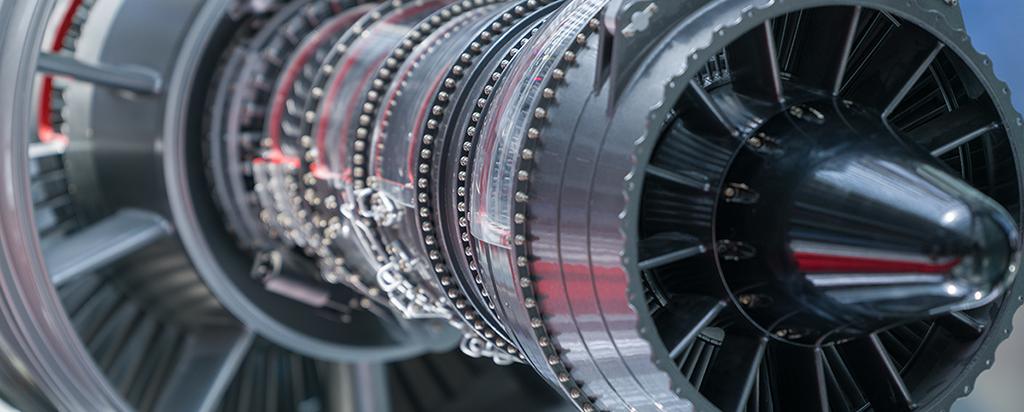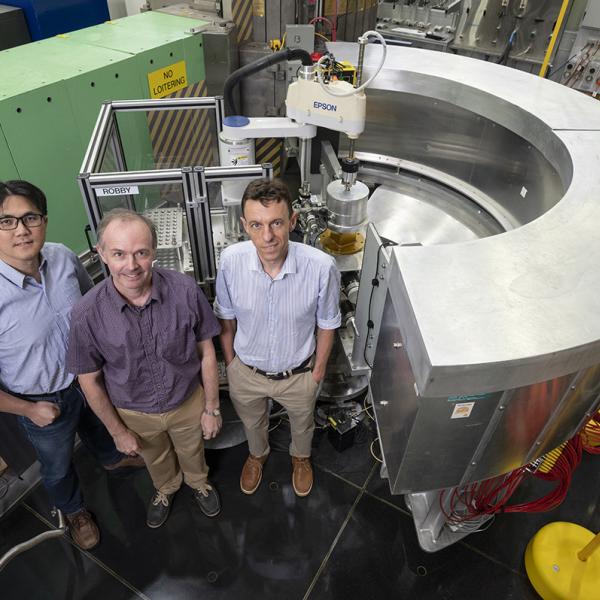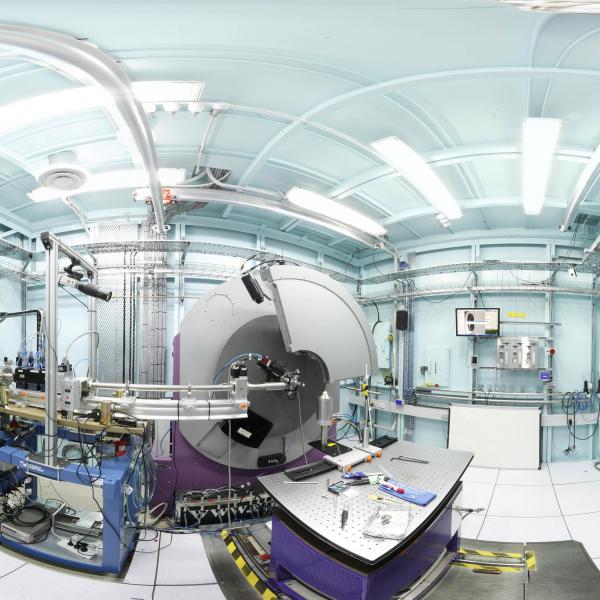

Published on the 9th June 2021 by ANSTO Staff
Key Points
-
Advanced material found with zero thermal expansion that could be used in high-precision mechanical instruments, control mechanisms, aerospace components and medical implants, for environments in which stability at varying temperatures is critical
-
A material made of scandium, aluminium, tungsten, and oxygen did not change in volume from 4 to 1400 Kelvin (-269 to 1126 °Celsius)
-
Neutron and X-ray diffraction experiments at ANSTO were used to determine the structure of the material at a range of temperatures
Researchers from UNSW have found an extraordinary material that does not expand or contract over an extremely wide temperature range and may be one of the most stable materials known.
Using instruments at ANSTO’s Australian Synchrotron and Australian Centre for Neutron Scattering as well as other techniques, the team led by UNSW A/Prof Neeraj Sharma, an ARC Future Fellow, demonstrated that the zero thermal expansion material made of scandium, aluminium, tungsten and oxygen did not change in volume from 4 to 1400 Kelvin (-269 to 1126 °Celsius).
Their research, published in the Chemistry of Materials, confirmed the structural stability of Sc1.5 Al0.5W3O12 with only minute changes to the bonds, position of oxygen atoms and rotations of the atom arrangements.
Materials with zero expansion are used in high-precision mechanical instruments, control mechanisms, aerospace components and medical implants, for environments in which stability at varying temperatures is critical.
Because of the relatively simple synthesis of the materials and the good availability of alumina and tungsten oxide, large-scale manufacture is a possibility.
“The scandium is rarer and more costly, but we are experimenting with other elements that might be substituted, and the stability retained,” said Sharma.
“We were conducting experiments with these materials in association with our batteries-based research, for unrelated purposes, and fortuitously came across this singular property of this particular composition,” said Sharma.
Comprehensive neutron scattering measurements were conducted at the Australian Centre for Neutron Scattering.
“Echidna is fantastic at determining structure, especially on the details of the lighter elements,” said Senior Instrument Scientist Dr Helen Maynard-Casely, who assisted with the measurements on the high-resolution powder diffractometer Echidna.
“Curiously, the experiments suggest these minute atomic displacements and adjustment appear to be undertaken cooperatively,” she added.
“Movements and rotations of atoms and radii are quite ordinary, but this correlated behaviour was quite unexpected,” said Maynard-Casely.
The crystallographic data from the diffraction experiments reflects the combination of subtle but observable distortions of the polyhedral units, bond lengths, angles and oxygen atoms that allow the material to absorb temperature changes.
“Is it the bond lengths that are expanding? Is it the displacement of the oxygen atoms? Or, is the whole polyhedral rotating? We have three factors that are correlating.
“At this point, it is not clear if one or all of these contributing factors are responsible for the stability over a range of temperatures and we are investigating further to try and isolate the mechanism,” said Sharma.
The researchers noted, however, that because this specific material composition demonstrated this property, factors other than atomic radii could be at play, such as more complex crystallographic or dynamic behaviour.
Investigations of other forms of the material of interest were undertaken on the powder diffraction beamline at the Australian Synchrotron with the assistance of Senior Instrument Scientist, Dr Helen Brand. Slightly different ratios of the elements did not show the zero thermal expansion.
The group is currently undertaking inelastic neutron scattering measurements at the Australian Centre for Neutron Scattering on this composition.
A/Prof Sharma was previously employed at ANSTO and worked with Prof Vanessa Peterson on battery materials research.
DOI: https://doi.org/10.1021/acs.chemmater.1c01007
This research enabled by





